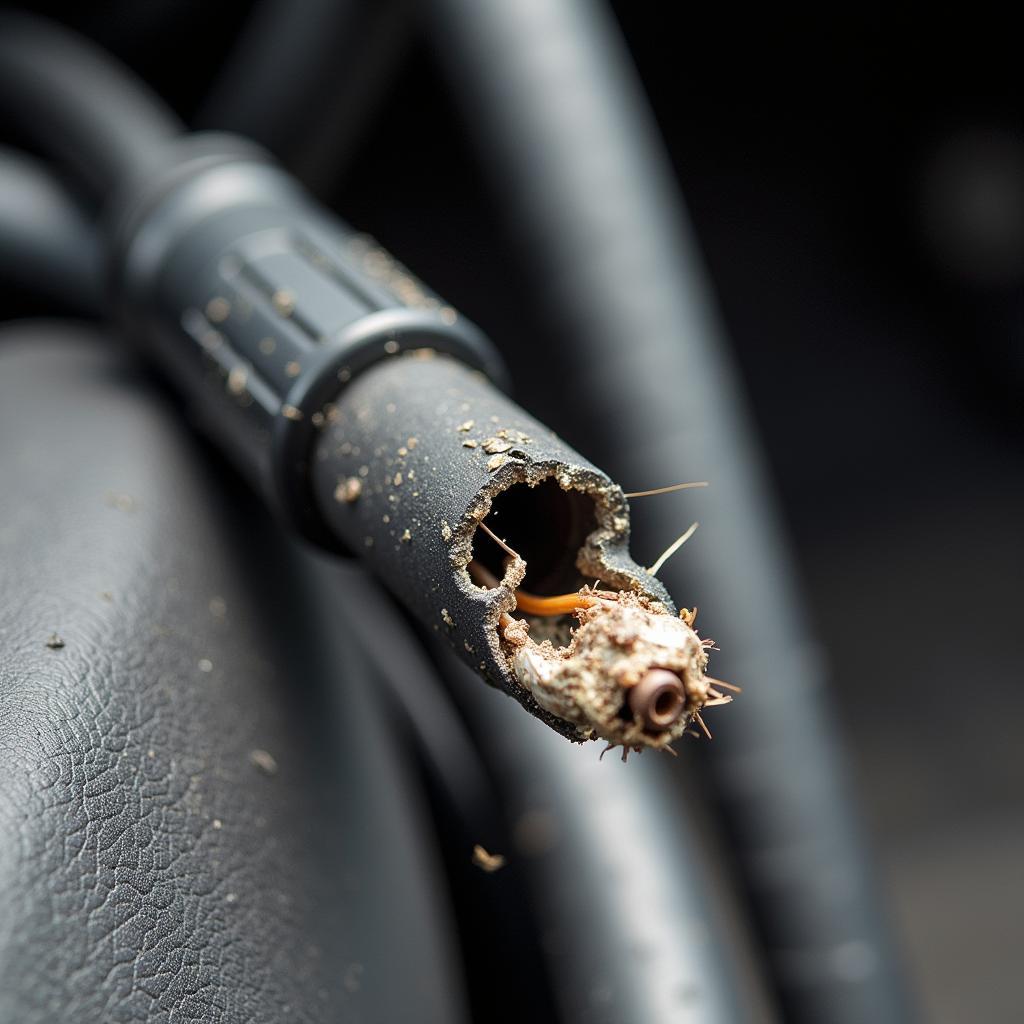A car’s idle speed is controlled by the idle air control valve, and when this component malfunctions, it leads to Car Idle Sensor Problems. These problems can manifest in various ways, from rough idling and stalling to increased fuel consumption. Understanding the causes, symptoms, and solutions to these issues is crucial for any car owner or mechanic. After reading this article, you’ll have a better grasp of how to diagnose and fix car idle sensor problems. Let’s dive in!
Understanding the Idle Air Control Valve
The idle air control valve (IAC valve), often referred to as the idle speed control valve, regulates the amount of air bypassing the throttle plate when the engine is idling. This ensures a smooth idle even when the engine is cold or under load from accessories like the air conditioning. A malfunctioning IAC valve can disrupt this delicate balance, leading to a range of driveability issues.
Common Car Idle Sensor Problems
Several issues can arise with the idle air control valve. These include:
- Carbon buildup: Over time, carbon deposits can accumulate on the IAC valve, restricting airflow and causing rough idling.
- Vacuum leaks: Leaks in the intake manifold or vacuum hoses can disrupt the airflow to the IAC valve, leading to erratic idle speeds.
- Wiring issues: Damaged or corroded wiring to the IAC valve can prevent it from functioning correctly.
- Faulty IAC valve: The IAC valve itself can fail due to wear and tear or internal malfunctions.
Diagnosing Car Idle Sensor Problems
If you suspect a problem with your car’s idle sensor, there are several diagnostic steps you can take. These include:
- Visual inspection: Check for any loose or damaged vacuum hoses, and inspect the wiring to the IAC valve for signs of corrosion or damage.
- Cleaning the IAC valve: Carefully remove the IAC valve and clean it with a throttle body cleaner. This can often resolve issues caused by carbon buildup.
- Checking for vacuum leaks: Use a carburetor cleaner or a smoke machine to check for vacuum leaks in the intake system.
- Testing the IAC valve: Use a multimeter to test the resistance of the IAC valve according to the manufacturer’s specifications.
Fixing Car Idle Sensor Problems
Depending on the diagnosis, the solution to your car idle sensor problems can range from simple cleaning to complete replacement. Here are some common fixes:
- Cleaning the IAC valve: This is often the first step and can resolve many issues related to carbon buildup.
- Repairing vacuum leaks: Replace any damaged vacuum hoses or repair leaks in the intake manifold.
- Replacing the IAC valve: If the IAC valve is faulty, it will need to be replaced.
- Repairing wiring issues: Repair or replace any damaged or corroded wiring to the IAC valve.
Did the 1994 riviera cars have computer problems? This is a common concern, and understanding its potential relation to idle issues can be helpful.
What happens if the idle air control valve goes bad?
A bad IAC valve can cause a variety of problems, including rough idling, stalling, and increased fuel consumption. It can also make it difficult to start the car, especially in cold weather.
How do I know if my idle air control sensor is bad?
Symptoms of a bad idle air control sensor include rough idling, stalling, fluctuating idle speed, and increased fuel consumption. You may also notice difficulty starting the car, especially in cold weather. Cold start car problem can also stem from other issues, so it’s important to investigate thoroughly. Similarly, car emission problems can sometimes be linked to a faulty IAC valve. If your car isn’t maintaining RPM, it’s essential to check the IAC valve. Cant maintain rpm car problem can significantly impact your driving experience. Remember the tragic toyota car acceleration problem family dwath and understand the importance of addressing any car performance issues promptly.
Conclusion
Car idle sensor problems can be frustrating, but they are often relatively easy to diagnose and fix. By understanding the function of the IAC valve and the common symptoms of its failure, you can quickly identify and address these issues, keeping your car running smoothly. For expert advice and assistance with your car’s idle control system, feel free to contact us at AutoTipPro. Our phone number is +1 (641) 206-8880, and our office is located at 500 N St Mary’s St, San Antonio, TX 78205, United States.
FAQ
- What is the function of a car idle sensor? The idle sensor, or IAC valve, regulates the engine’s air intake at idle, ensuring a smooth and stable idle speed.
- How can I clean my car’s idle sensor? You can typically clean the IAC valve with a specialized throttle body cleaner.
- How much does it cost to replace an idle sensor? The cost varies depending on the car model, but it typically ranges from $100 to $300.
- Can a bad idle sensor cause my car to stall? Yes, a malfunctioning idle sensor can disrupt the air-fuel mixture, leading to stalling.
- What are the signs of a bad idle air control valve? Rough idling, stalling, fluctuating idle speed, and difficulty starting are common signs.
- Can I drive with a bad idle air control valve? While you might be able to drive, it’s not recommended, as it can lead to further engine problems and reduced fuel efficiency.
- How often should I clean my car’s idle air control valve? Cleaning it every 30,000 miles or as part of a regular tune-up is generally recommended.







Leave a Reply